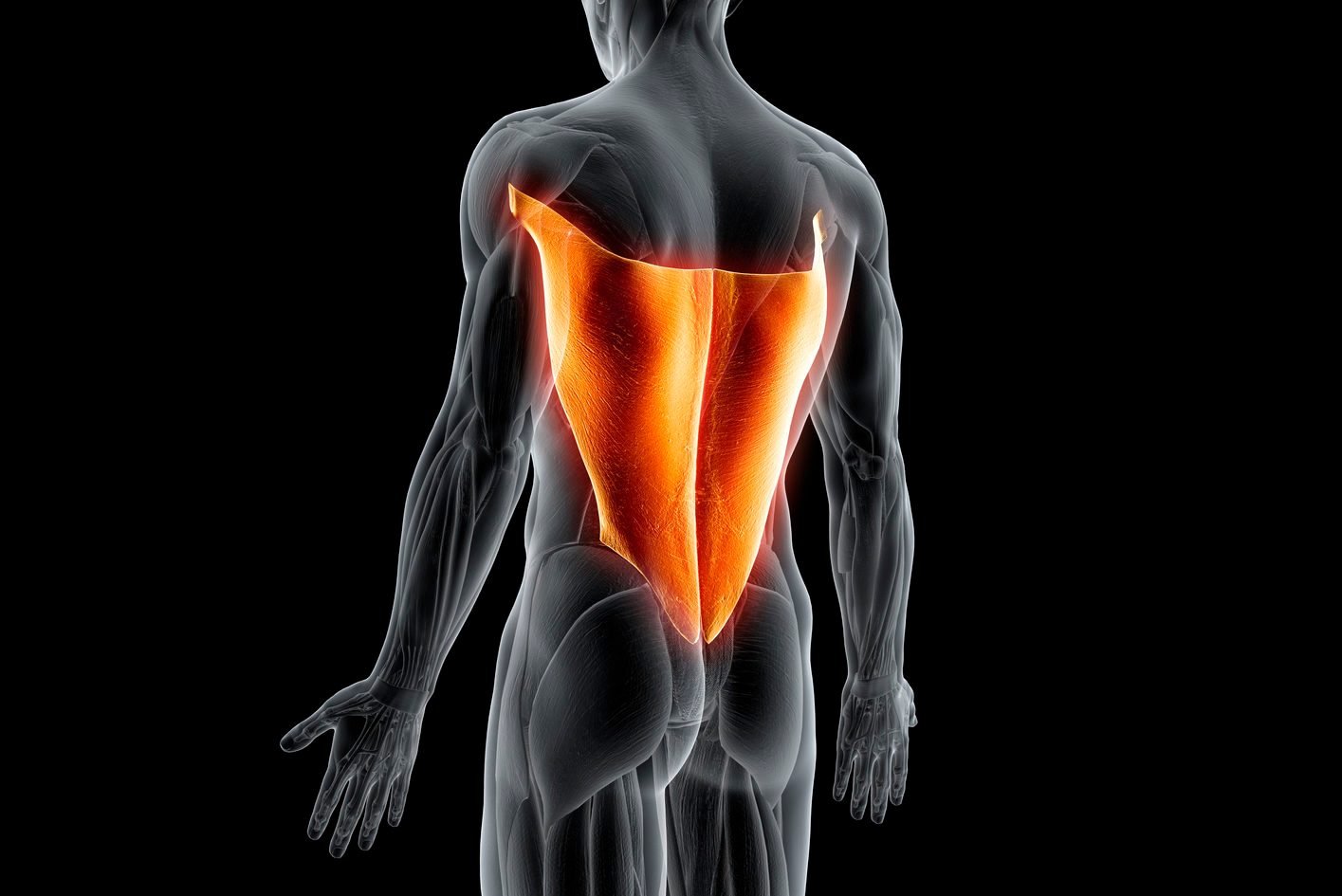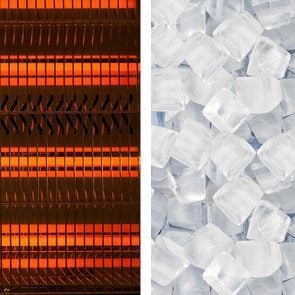6 Reasons You Might Have Latissimus Dorsi Pain
Updated: Jun. 10, 2021
Find out why this wide muscle, located in your back, may ache. Here's how to recognize the symptoms of latissimus dorsi pain, as well as how to prevent and treat the pain.
Understanding the lats
You might have heard of trainers or your doctor refer to your latissimus dorsi muscle, or “lat” for short. This large muscle in the back of the upper body does a lot of work during everyday movements, but it can also plague a person with pain for a few reasons.
You can be at greater risk of injury if you have poor posture, if you don’t warm up when you exercise, or if you perform some activities over and over again.
Here’s what to know about the latissimus dorsi muscle’s role in the body, what can cause pain to this area, and what to know about the prevention and treatment of aches.
What is the latissimus dorsi?
The latissimus dorsi is one of the largest muscles on the back, spanning across your shoulder area and down to the low back to form a triangle shape, explains Akhil Chhatre, MD, director of spine rehabilitation at Johns Hopkins University School of Medicine.
You use your lat muscle every single day, while standing, walking, sitting, or doing any movement with the upper body—even stabilizing your core, which include your abdominal muscles, says Dr. Chhatre, who’s an assistant professor in the Department of Physical Medicine and Rehabilitation and Neurosurgery at Johns Hopkins University School of Medicine.
“It’s an important stabilizer for the spine and arm function, and it provides balance for the pectoralis, the large muscle of the front of the body, the chest,” he says. It also works to retract the shoulders, when you pull them down away from the ears.
The latissimus dorsi has three main roles in moving the shoulder in space, says Andrew R. Jensen, MD, assistant professor of shoulder and elbow reconstructive surgery in the Department of Orthopaedic Surgery at the University of California Los Anageles.
This includes shoulder extension (pulling the arm back), shoulder adduction (bringing the arm closer to the body), and internal rotation of the shoulder.
(Try these stretches and exercises for shoulder pain.)

What causes latissimus dorsi pain?
Dr. Jensen says latissimus dorsi pain is less common than pain in the muscles of the rotator cuff (the four muscles that stabilize the shoulder) or the biceps tendon, but several issues can still lead to pain in the latissimus dorsi.
(Here are 12 reasons for shoulder pain.)
This pain might show up at the back of the shoulder, the back of the armpit, or the mid to low back area. Here’s what could cause latissimus dorsi pain.
Muscle or tendon tear
A traumatic incident, like a sports injury, can lead to a tear in the latissimus dorsi muscle, which can definitely cause pain, Dr. Chhatre says. Often, overhead activities, like trying to pull down a heavy object that weighs more than the lat can handle, can cause a tear at the muscle.
Dr. Jensen says rodeo bull riders, who are constantly jerked around by the arm, and baseball or softball pitchers are more prone to tears at the latissimus dorsi than the average person.
“Tears themselves can happen anywhere along the muscle,” he says. “Most commonly, a tear happens where the tendon inserts into the bone of the shoulder.”
If you do experience a tear, you’ll likely feel a popping sensation when it happens and pain and swelling over the next few days.
Pain from a muscle tear in the latissimus dorsi can also come with a dull ache at rest, which might worsen to sharp, searing pain when you use the muscle, Dr. Chhatre says. Pain also can span from the neck out to the shoulder and follow down to the low back.
Typically, you’ll need a physical exam. Doctors often order an ultrasound or MRI to diagnose a tear in the latissimus dorsi, Dr. Jensen says.
Treatment will involve resting for a period of time, then slowly returning to function with physical therapy to engage the muscle and recondition it, Dr. Chhatre says. A full tear (not just partial), you might require surgery.
Muscle strain or tendonitis
Overuse of the latissimus dorsi can lead to muscle strains or tendonitis (terms often used interchangeably) and, as a result, pain, Dr. Jensen says. If you’re frequently performing those movements of the shoulder—extension, adduction, or internal rotation—you could get an overuse injury, he says.
Activities like rowing, performing lat pull-downs, or constantly picking heavy things off the ground can contribute to these issues. You might feel it when you’re swimming, shoveling snow, or chopping wood.
The first step: working with your doctor to identify which of your activities is exacerbating the issue. Dr. Jensen says it’s often a new workout routine. From there, you’ll decrease that activity as much as possible.
Doctors often suggest taking oral anti-inflammatory medications (like ibuprofen) to help with acute inflammation. Heating or icing (whichever works better for you) can help. As can physical therapy, which addresses pain from overuse with range-of-motion and eccentric strengthening exercises.
To prevent overuse injuries in the first place, ease into a new workout routine. “If you’re having pain after the activity or the morning after, scale back to modify the demands,” Dr. Jensen says.
Osteoarthritis
Arthritis of the thoracic spine (in your mid and upper back) might also lead to pain that radiates to the latissimus dorsi, Dr. Chhatre says.
Also known as degenerative joint disease, osteoarthritis occurs when the cartilage within a joint begins to break down. It can lead to pain, swelling, and decreased range of motion. Osteoarthritis often comes with age, but a previous injury might also increase your risk.
Treatment can include increasing physical activity, physical therapy, over-the-counter pain relievers, and occasionally, surgery.
Pinched nerve
Also known as radiculopathy, a pinched nerve in the spine can cause a burning sensation there and can lead to pain in the latissimus dorsi, Dr. Chhatre says. Doctors will typically recommend medications to address this type of pain.
Rotator cuff injuries
You can tear any of the four muscles of the rotator cuff—the subscapularis, teres minor, supraspinatus, or infraspinatus—all of which work to stabilize the shoulder. Or you can get a wear-and-tear injury in these muscles that gets worse over time, Dr. Jensen says.
Pain from these injuries can show up as anterior (front of the body), lateral (side of the body), or posterior (back of the body) aches.
Rotator cuff injuries may require surgery, particularly for tears, but overuse issues typically get better by working with a physical therapist or orthopedist, heating, icing, and taking anti-inflammatory medication, Dr. Jensen explains.
(Try these rotator cuff stretches to prevent pain and avoid injury.)
Quadrilateral space syndrome
This syndrome involves compression in nerves in the back of the shoulder. Like tears or strains, it often presents in athletes or other highly active people and can lead to pain in the back of the shoulder.
With quadrilateral space syndrome, people tend to experience shooting, radiating pain. Doctors will often diagnose it with a physical exam and imaging, like an MRI, Dr. Jensen says. Treatment might include injections of local anesthesia, as well as a corticosteroid.






















